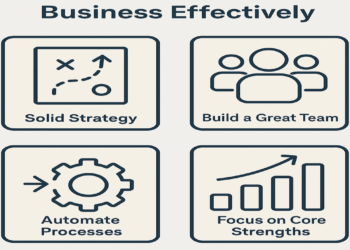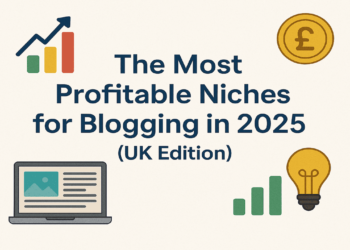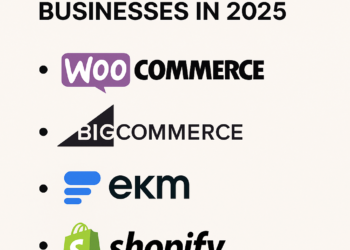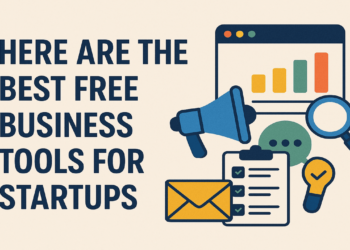There was a time when people simply bought things. You wanted a movie? You bought a DVD. Needed a razor? You picked one up at the store. But now, the game has changed. From Netflix to meal kits, and from software to pet food, everything seems to come with a subscription. Welcome to the world of subscription-based businesses.
The Subscription Boom: Why Everyone Wants In
Subscription businesses are booming, and for good reason. They offer customers convenience, affordability, and a seamless shopping experience. For businesses, they bring something even more valuable. That is, predictable and recurring revenue models.
Instead of relying on one-time sales, companies can count on a steady stream of income, month after month. This shift has changed the way businesses operate and how consumers interact with brands.
The “subscription economy” isn’t limited to streaming services anymore. It has expanded into every industry—health and wellness, fashion, education, and even automobiles. The ability to receive products or services on a recurring basis has become the new normal.
Why Consumers Love Membership Businesses
People have fallen in love with membership businesses because they simplify life. Who doesn’t love the idea of groceries arriving at their doorstep or access to a library of entertainment without ever leaving the couch?
Here are some reasons why subscription-based models attract so many consumers:
- Convenience – No need to reorder or repurchase; everything arrives automatically.
- Cost Savings – Subscriptions often offer better value than one-time purchases.
- Personalization – Many subscription services curate products based on individual preferences.
- Exclusive Access – Membership models often come with VIP perks, discounts, or early access to new products.
This model isn’t just about selling. It’s about building lasting relationships. Companies are shifting from transaction-based interactions to ongoing engagement, creating loyal communities around their brands.
Businesses Reaping the Benefits of Recurring Revenue Models
For businesses, the appeal of a subscription-based model is undeniable. Predictable income allows for better financial planning and stability. It also enables brands to invest more in customer experience and product innovation.
Some of the key advantages for businesses include:
- Steady Cash Flow – Instead of fluctuating sales cycles, businesses enjoy a reliable revenue stream.
- Better Customer Retention – Once a customer subscribes, they’re more likely to stay engaged with the brand.
- Lower Marketing Costs – Acquiring new customers is expensive; retaining subscribers is more cost-effective.
- Valuable Customer Insights – Businesses can track usage patterns, preferences, and buying behaviors to refine their offerings.
It’s no surprise that companies are jumping on the subscription bandwagon, from startups to corporate giants.
The Evolution of the Subscription Economy
The concept of subscriptions isn’t new. Newspapers and magazines have operated on this model for centuries. But today, the digital world has taken it to another level. With advancements in AI, data analytics, and automation, businesses can offer highly personalized experiences like never before.
Brands like Spotify, Amazon Prime, and Dollar Shave Club have redefined what consumers expect from subscription services flexibility, ease of use, and a strong focus on customer experience. Even traditionally pay-per-use industries, such as fitness and gaming, are embracing the membership model. Peloton offers on-demand workout content through a subscription, while Xbox Game Pass provides unlimited access to games for a monthly fee.
As AI is transforming digital marketing, it’s also reshaping how brands attract, engage, and retain subscribers. Personalized recommendations, predictive analytics, and automated customer journeys are making subscription models more dynamic and data-driven than ever before.
Problems with the Subscription-Based Model
Despite its many advantages, the subscription economy isn’t without its challenges.
- Subscription Fatigue – Consumers can feel overwhelmed by too many monthly payments, leading to cancellations.
- Retention Struggles – Businesses must continuously add value to keep subscribers engaged.
- Competition – With so many players entering the market, standing out is harder than ever.
- Pricing Pressure – Finding the right balance between affordability and profitability can be tricky.
Companies that succeed in this space are the ones that prioritize customer experience, flexibility, and value. The key is to ensure that customers feel like they’re getting more than they’re paying for.
Final Thoughts
The rise of subscription-based businesses is transforming the way we shop. And not just shop but also how we consume content and access services. What started as a trend is now a fundamental shift in consumer behavior. And it’s the appeal of convenience, cost savings, and personalization that has made subscriptions a preferred choice for both businesses and customers.
However, success in this space depends on delivering consistent value. The businesses that understand their audience, create engaging experiences, and evolve with market demands will continue to flourish with this rising model.
























